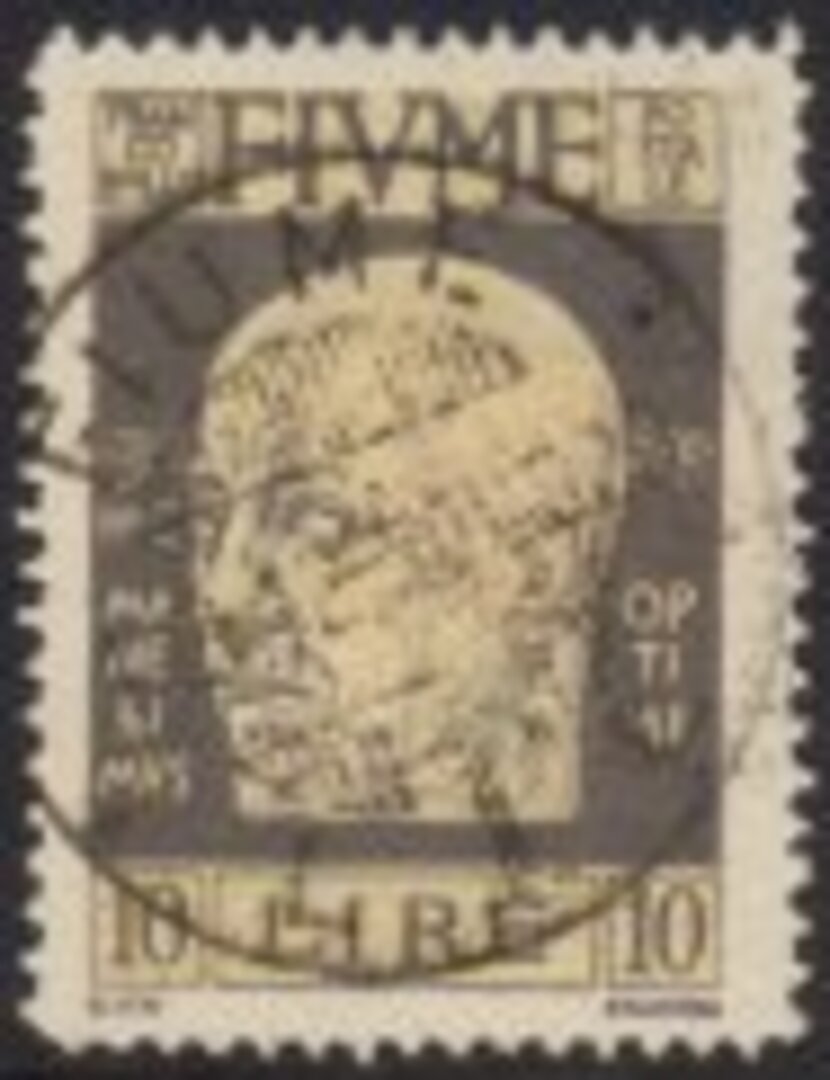Sometimes from the political turmoil and aftermath of war there can be unexpected yet welcome philatelic consequences. This is just the case with the stamps issued by the short-lived Free State of Fiume (September 1919 – December 1920). During this period postage stamps bearing the portrait of a quite remarkable much loved Italian poet, author, playwright, war hero, aviator and fervent Italian nationalist, Gabriele d’Annuzio (1863-1938), were issued.
Although I knew that there was a strong Italian link, I have to admit that I had to re-check precisely where Fiume was situated. I couldn't recall any mention of the name from my far off school geography lessons and my old and tattered school atlas offered little assistance! However, by using the modern magic of “Google” I was able to confirm that whilst only occupying an area of some eleven square miles, Fiume is located on the Adriatic Sea and has, since Roman times, been considered an important strategic port opposite and near to Venice and Ravenna. It is probably far better known to-day by its Croatian name, Rijeka. So why was such a small State so politically important and why did it have such an impact on the philatelic stage during the six years that it existed, and especially during the even shorter period time that Gabriele d’Annuzio controlled what he rather romantically renamed “Reggenza Italiana del Carnaro”, and proclaimed that ‘music’ was to be a fundamental principle of the constitution?
As we shall see, whilst Fiume itself only existed for six years between 1918 –1924, the unilateral seizure and control of the Free State by Gabriele d’Annuzio and his small force of 2,000 nationalist Legionnaires, supported by the local Italian population lasted for an even shorter period of just over one year. Yet during that time a proliferation of philatelic material was produced that includes many examples of different overprints and variations that are of particular interest to collectors, including those overprinted with the names of two islands located in the nearby Quarnero Bay called “ARBE” and “VEGLIA”, that celebrated the Legionnaire’s seizure of the islands on the 13th November 1920.
What followed after the First World War might be described as a state of political uncertainty and anarchy, sufficient that for a period of 20 days the Kingdom of Serbs, Croats and Slovenes claimed the territory as part of Croatia. This occupation was ended when an allied force of Italian, British, French and American troops were sent and took control. The International Peace Conference held in Paris in January 1919 determined the future of the region, though as we have seen Gabriele d’Annuzio had different ideas, and with a blatant disregard for formality, seized the province, driving out the allied forces and declaring the territory to be an independent state, though sovereignty was never recognised by the international community. The first stamps were issued in 1920.
Gabriele d’Annuzio soon offered the peaceful return of Fiume to the Italian government. This was refused and in November 1920, the government signed the Treaty of Rapallo ceding Fiume to the Kingdom of Serbs, Croats and Slovenes. After a five day sea bombardment of the harbour by the Italian Navy, Gabriele d’Annuzio and his forces were defeated and control passed to what became Yugoslavia in 1929. Despite the defeat, Gabriele d’Annuzio returned to his native Italy as a hero and continued to develop a very successful literary career.
We have recently broken down a large collection of these issues and are able to offer a fine selection in our Hunters 2nd December auction (lots 6208 – 6226) . They again demonstrate how philately continues to offer a visual and tangible link to the historical events that happened nearly 100 years ago, in this case a virtual “private military occupation” which occurred shortly after the end of the First World War.


 General
General
 General
General
 General
General